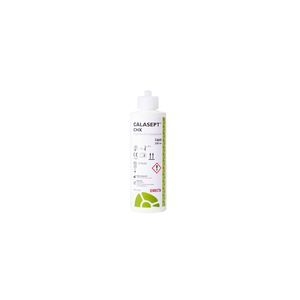
Calcium hydroxide dental material Calasept® endodontictemporary
Add to favorites
Compare this product
Characteristics
- Type
- calcium hydroxide
- Applications
- endodontic
- Other characteristics
- temporary
Description
Calcium Hydroxide
Calasept has a very high calcium hydroxide content (>41%), allowing the hydroxyl ions present to generate an elevated pH value of 12.4. This ensures that the paste has a pronounced antimicrobial effect. The high concentration of calcium hydroxide also means that Calasept is long-lasting, releasing calcium ions long after placement. Calasept is a ready-to-use paste in an airtight syringe, applied directly through the needle.
Indications:
- Temporary root-filling
- Direct pulp capping
- Indirect pulp capping
Reasons to use Calasept®
Long-lasting and very effective
The very high concentration of >41% calcium hydroxide, in combination with optimal calcium ion release, creates an efficient and long-lasting antimicrobial effect.
Direct, quick and easy application
Calasept is a ready-to-use paste available in an airtight syringe, allowing for direct application through the needle. The airtight syringe eliminates the risk of incorporating air into the calcium hydroxide, turning the material into calcium carbonate.
Optimal calcium release
Made of pure calcium hydroxide. The high concentration of calcium hydroxide creates a long-lasting effect, with the paste releasing calcium ions long after initial placement.
One product – three indications
Can be used for temporary root fillings, direct pulp capping and indirect pulp capping in deep cavities.
Catalogs
Calasept
10 Pages
Related Searches
- Dental material
- Restoration dental material
- Dental CAD/CAM material
- Translucent dental material
- Opaque dental material
- Liquid dental material
- Temporary dental material
- Endodontic dental material
- Gel dental material
- Radio-opaque dental material
- Buccal tissue matrix
- Root canal filling dental material
- Hybrid dental material
- Tray for dental instruments
- Lithium disilicate dental material
- Dental crown
- Calcium hydroxide dental material
- Molar dental crown
- Ceramic dental crown
- Polycarbonate dental crown
*Prices are pre-tax. They exclude delivery charges and customs duties and do not include additional charges for installation or activation options. Prices are indicative only and may vary by country, with changes to the cost of raw materials and exchange rates.






